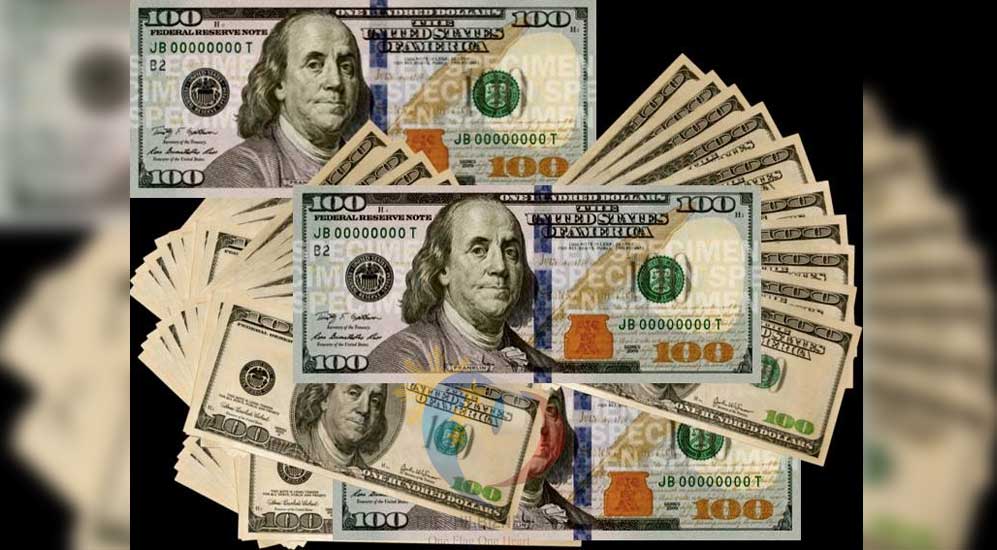Photo File from THEPHILBIZNEWS
It seems there is no stopping it.
The Philippine peso is heading to sink further until end of 2019 as the country’s ballooning trade deficit which would not be able to cushioned by the overseas remittances despite the OFWs remittances that hit $18.5B in 7 months.
The peso slumped to a 13-year low of P54.28 per dollar on Monday and it is most likely hit as low as P55 against the US dollar at the end of 2018 and further slide to P58 per dollar level once 2019 comes to a close, London-based Capital Economics said in a report.
The Capital Economics said, “Looking ahead, the trade deficit is likely to widen further as imports of capital goods continue to flood in to support Duterte’s infrastructure drive.”
With the peso continuous weakening by almost 8 percent against the dollar since the start of the year, it has been tagged as one of the worst performing Asian currencies.
Meanwhile President Rodrigo Duterte’s plan to sustain the country’s steady growth by spending P9 trillion in infrastructure via Build! Build! Build! has fueled the demand for imports of construction-related goods. This inevitably posits using our dollar reserves. The increasing capital goods imports due to the infrastructure boom have reversed the country’s current account surplus to a deficit, pressuring the peso and affects it inevitable devaaluation against the mighty greenback.
The country’s trade gap in July has widened to $3.55 billion, the third-worst on record, after exports’ lackluster performance failed to match imports’ accelerated growth pace.
The Dutch financial giant ING Groep NV said remittances, which recovered 5.2 percent year-on-year in July, would not be enough to cushion the trade deficit that’s driving the Philippine peso lower.
Money sent home by Filipinos working abroad is one of the Philippines’ main sources of dollars, helping the economy stay afloat.
However, ING Bank senior economist Joey Cuyegkeng said, “Weak peso trend hasn’t changed despite remittance rebound… Monthly remittances remain inadequate to finance the monthly trade deficit.”
“This shortfall will continue and should keep the peso on a defensive bias,” Cuyegkeng warned.
Meanwhile, Presidential spokesperson Harry Roque said the Palace is confident that the peso will recover, claiming that it has historically been strongest in December because of remittances.
However, the claim of Duterte’s mouthpiece is not supported by facts or professional opinion because from 1986 to 2017, the average monthly peso-to-dollar exchange rate was weakest in December 12 times, or around once every three years: in 1989, 1990, 1995, 1996, 1997, 1999, 2000, 2002, 2003, 2013, 2015 and 2016” based on Bangko Sentral ng Pilipinas data.
The inflation has been hitting our economy very badly that even the Employers Confederation of the Philippines (ECOP) has asked the government to suspend the implemantation of excise tax in the fuel lest it would be disastrous to the economy as consumers have to bear the burden of the impact of this.
Read related story:
Employers Confederation worries by inflation, seeks suspension on fuel excise tax
The weak peso has been contributing to rising domestic inflation which is the highest level for almost 10 years with 6.6% registered inflation in March 2009. The depreciating local currency has also been pushing up prices for imported capital goods, posing a challenge to Duterte’s multi-trillion peso infrastructure program. The peso’s weakness can likewise drive up the value of the national government’s foreign loans.
The Bangko Sentral ng Pilipinas has raised concern for the currency weakness as this inevitably contributes to the soaring inflation. BSP Governor Nestor Espenilla said monetary authorities are rushing prudent measures to curb speculation in the foreign exchange market.
Both ING Bank and Capital Economics forecast on another rate hike from the BSP this month to stem the peso’s depreciation and fight inflation.
Some analysts have given warning of further depreciation for the peso, although there are sentiments that the upcoming Christmas season due to expected influx of remittance from Filipinos abroad which according to many financial analysts are not enough to cushion the impact to make the Philippine pesos strong.














